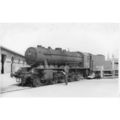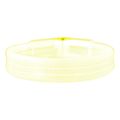Sunderland, Tyne & Wear - Opening of South Docks 1850 - art postcard c.1960s
- Condition : Used
- Dispatch : 2 Days
- Brand : None
- ID# : 140696237
- Quantity : 1 item
- Views : 352
- Location : United Kingdom

- Seller : justthebook (+1703)
- Barcode : None
- Start : Wed 01 Jul 2015 09:26:05 (BST)
- Close : Run Until Sold
- Remain : Run Until Sold
More Listings from This Seller view all
Seller's Description
- Postcard
- Picture / Image: The Opening of the South Docks, Sunderland by George Hudson Esq, MP June 20th 1850 Oil on Canvas by Mark Thompson (1812-1875)
- Publisher: Sunderland Museums and Art Galleries, c.1960s
- Postally used: no
- Stamp: n/a
- Postmark(s): n/a
- Sent to: n/a
- Notes / condition:
Please ask if you need any other information and I will do the best I can to answer.
Image may be low res for illustrative purposes - if you need a higher definition image then please contact me and I may be able to send one. No cards have been trimmed (unless stated).
------------------------------------------------
Postage & Packing:
Postage and packing charge should be showing for your location (contact if not sure).
No additional charges for more than one postcard. You can buy as many postcards from me as you like and you will just pay the fee above once. Please wait for combined invoice. (If buying postcards with other things such as books, please contact or wait for invoice before paying).
Payment Methods:
UK - PayPal, Cheque (from UK bank) or postal order
Outside UK: PayPal ONLY (unless otherwise stated) please. NO non-UK currency checks or money orders (sorry).
NOTE: All postcards are sent in brand new stiffened envelopes which I have bought for the task. These are specially made to protect postcards and you may be able to re-use them. In addition there are other costs to sending so the above charge is not just for the stamp!
I will give a full refund if you are not fully satisfied with the postcard.
----------------------------------------------
Text from the free encyclopedia WIKIPEDIA may appear below to give a little background information (internal links may not work) :
*************
Sunderland (i/'s?nd?rl?nd/, local /'s?n(d)l?n/) is a city which lies at the heart of the City of Sunderland metropolitan borough, a part of Tyne and Wear, in North East England. It is situated at the mouth of the River Wear.
Historically a part of County Durham, there were three original settlements on the site of modern-day Sunderland. On the north side of the river, Monkwearmouth was settled in 674 when Benedict Biscop founded the Wearmouth-Jarrow monastery. Opposite the monastery on the south bank, Bishopwearmouth was founded in 930. A small fishing village called Sunderland, located toward the mouth of the river (modern day East End) was granted a charter in 1179.
Over the centuries, Sunderland grew as a port, trading coal and salt. Ships began to be built on the river in the 14th century. By the 19th century, the port of Sunderland had grown to absorb Bishopwearmouth and Monkwearmouth.
A person who is born or lives around the Sunderland area is sometimes colloquially known as a Mackem.[2][3]
The earliest inhabitants of the Sunderland area were Stone Age hunter-gatherers and artifacts from this era have been discovered, including microliths found during excavations at St Peter's Church, Monkwearmouth.[4] During the final phase of the Stone Age, the Neolithic period (c.4,000-c.2,000 BC), Hastings Hill, on the western outskirts of Sunderland, was a focal point of activity and a place of burial and ritual significance. Evidence includes the former presence of a cursus monument.[5] It is believed the Brigantes inhabited the area around the River Wear in the pre- and post-Roman era. There is a long-standing local legend that there was a Roman settlement on the south bank of the River Wear on what is the site of the former Vaux Brewery, although no archaeological investigation has taken place.[6] Recorded settlements at the mouth of the Wear date to 674, when an Anglo-Saxon nobleman, Benedict Biscop, granted land by King Ecgfrith of Northumbria, founded the Wearmouth-Jarrow (St. Peter's) monastery on the north bank of the river – an area that became known as Monkwearmouth. Biscop's monastery was the first built of stone in Northumbria. He employed glaziers from France and in doing so he re-established glass making in Britain.[7] In 686 the community was taken over by Ceolfrid, and Wearmouth-Jarrow became a major centre of learning and knowledge in Anglo-Saxon England with a library of around 300 volumes.[8]
The Codex Amiatinus, described by White as the 'finest book in the world',[9][10] was created at the monastery and was likely worked on by Bede, who was born at Wearmouth in 673.[11] While at the monastery, Bede completed the Historia ecclesiastica gentis Anglorum (The Ecclesiastical History of the English People) in 731, a feat which earned him the title: The father of English history.[12]
In the late 8th century, the Vikings raided the coast, and by the middle of the 9th century, the monastery had been abandoned. Lands on the south side of the river were granted to the Bishop of Durham by Athelstan of England in 930; these became known as Bishopwearmouth and included settlements such as Ryhope which fall within the modern boundary of Sunderland.[13][14]
In 1100, Bishopwearmouth parish included a fishing village at the southern mouth of the river (now the East End) known as 'Soender-land' (which evolved into 'Sunderland').[15] This settlement was granted a charter in 1179 by Hugh Pudsey, then the Bishop of Durham.[16]
From 1346 ships were being built at Wearmouth, by a merchant named Thomas Menville.[17] In 1589, salt was made in Sunderland.[18] Large vats of seawater, were heated using coal. As the water evaporated the salt remained. This process, known as salt panning, gave its name to Bishopwearmouth Panns; the modern-day name of the area the pans occupied is Pann's Bank, on the river bank between the city centre and the East End. As coal was required to heat the salt pans, a coal mining community began to emerge. Only poor quality coal was used in salt panning; quality coal was traded via the port, which subsequently began to grow.[19]
type=printed
city/ region=sunderland
period=post-war (1945-present)
postage condition=unposted
number of items=single
size=continental/ modern (150x100 mm)
Listing Information
| Listing Type | Gallery Listing |
| Listing ID# | 140696237 |
| Start Time | Wed 01 Jul 2015 09:26:05 (BST) |
| Close Time | Run Until Sold |
| Starting Bid | Fixed Price (no bidding) |
| Item Condition | Used |
| Bids | 0 |
| Views | 352 |
| Dispatch Time | 2 Days |
| Quantity | 1 |
| Location | United Kingdom |
| Auto Extend | No |



 for 1 item(s)
for 1 item(s)















